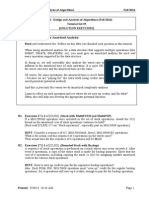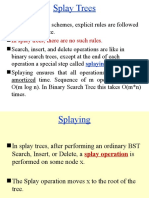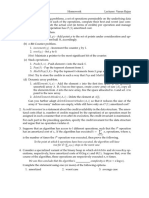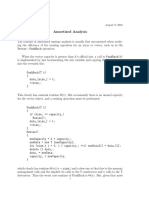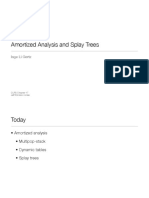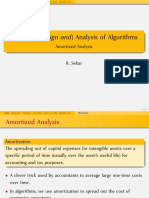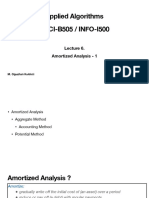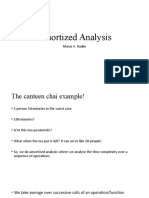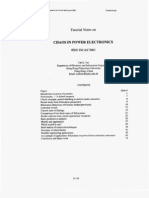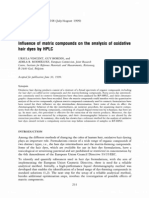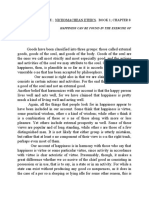0% found this document useful (0 votes)
214 views2 pagesAmortized Analysis in Data Structures
This document contains an assignment with 5 questions on data structures and algorithms. It provides answers to each question explaining concepts like amortized analysis, binary heaps, stacks, and analyzing time complexities of operations on different data structures. The total cost of n stack operations is analyzed to be O(n+(s0-sn)), where s0 is the initial number of elements and sn is the final number, indicating the work is limited by the number of operations if the stack grows.
Uploaded by
Jatin JasaiwalCopyright
© © All Rights Reserved
We take content rights seriously. If you suspect this is your content, claim it here.
Available Formats
Download as PDF, TXT or read online on Scribd
0% found this document useful (0 votes)
214 views2 pagesAmortized Analysis in Data Structures
This document contains an assignment with 5 questions on data structures and algorithms. It provides answers to each question explaining concepts like amortized analysis, binary heaps, stacks, and analyzing time complexities of operations on different data structures. The total cost of n stack operations is analyzed to be O(n+(s0-sn)), where s0 is the initial number of elements and sn is the final number, indicating the work is limited by the number of operations if the stack grows.
Uploaded by
Jatin JasaiwalCopyright
© © All Rights Reserved
We take content rights seriously. If you suspect this is your content, claim it here.
Available Formats
Download as PDF, TXT or read online on Scribd
/ 2

